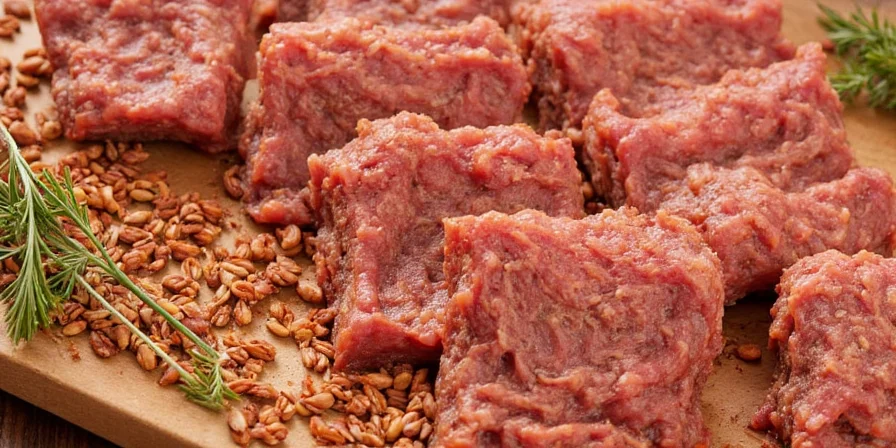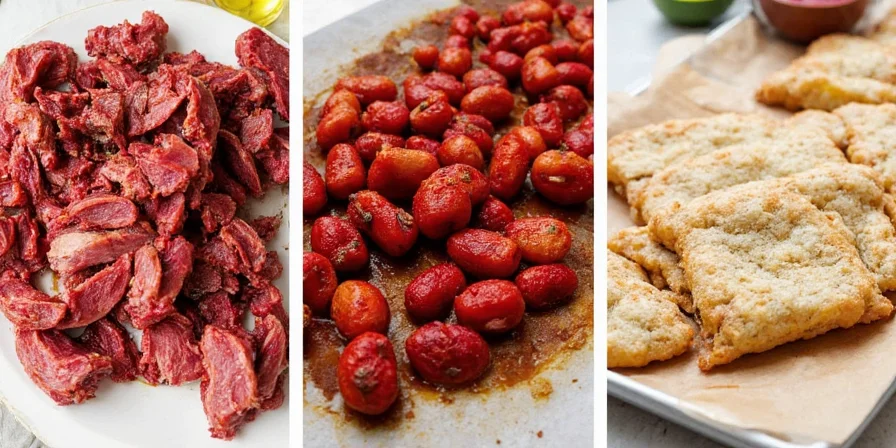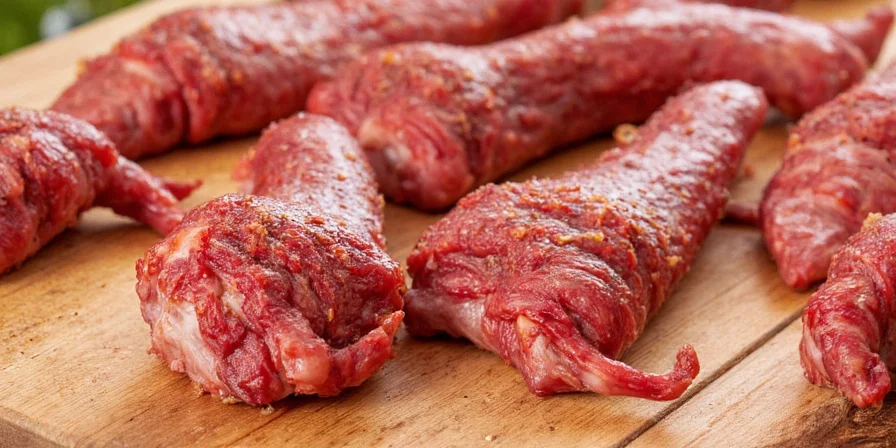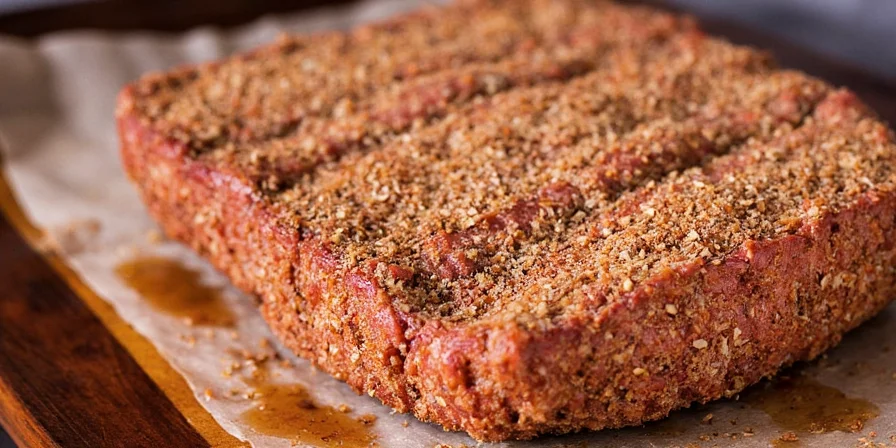Dry brining times vary by meat type: Chicken breasts need 6-10 hours, whole chicken requires 24-36 hours, steaks benefit from 36-48 hours refrigerated (or 45-90 minutes at room temperature), pork chops need 12-18 hours, and turkey requires 54-66 hours for optimal results. These evidence-based timelines maximize moisture retention and flavor development while preventing over-salting. Below we break down precise durations with scientific explanations and practical tips you can implement immediately.
Table of Contents
- Quick Reference Guide: Dry Brining Times by Meat Type
- What Is Dry Brining and Why It Works Better Than Wet Brining
- The Science Behind Dry Brining Timeframes
- Spice Optimization Hacks for Maximum Flavor
- Critical Mistakes to Avoid When Dry Brining
- Proper Storage During and After Brining
- Visual Timeline Comparison for All Meats
- Global Dry Brining Techniques That Work
- Frequently Asked Questions Answered
Quick Reference Guide: Dry Brining Times by Meat Type
Before we dive deeper, here's exactly how long to dry brine different meats for perfect results:
- Chicken breasts: 6–10 hours (max 12 hours)
- Whole chicken: 24–36 hours
- Steak (1–1.5 inch thick): 36–48 hours refrigerated OR 45–90 minutes at room temperature
- Pork chops: 12–18 hours
- Turkey: 54–66 hours
- Fish (salmon): 30–45 minutes
- Fish (delicate): 15 minutes maximum


What Is Dry Brining and Why It Works Better Than Wet Brining
Dry brining transforms meat through simple salt application without liquid. Unlike wet brining that dilutes flavor, this method uses salt to draw out moisture which then reabsorbs deeply into the meat. The process creates a natural brine on the meat's surface that penetrates during refrigeration, enhancing moisture retention by up to 15% while developing complex flavors. This scientific approach delivers juicier results with better browning than traditional wet brining.
The Science Behind Dry Brining Timeframes
Understanding why specific durations work helps prevent common errors. Salt triggers a two-phase process: First, it draws surface moisture through osmosis, dissolving to form a concentrated brine. During refrigeration, myosin proteins denature, allowing this brine to reabsorb into muscle fibers.
The precise timing matters because:
- Too short: Salt doesn't penetrate deeply enough for flavor and moisture benefits
- Too long: Surface proteins break down excessively, causing mushy texture
- Fat content: Fatty cuts like pork belly need shorter times (max 4 hours) as fat blocks salt penetration
- Thickness: Each additional ¼ inch of thickness adds 2-3 hours to optimal brining time
Spice Optimization Hacks for Maximum Flavor
Boost flavor penetration with these proven techniques:
- Salt-to-spice ratio: Use ½ teaspoon kosher salt per pound of meat as base, then add spices
- Oil infusion: Mix 90% dry spices with 10% neutral oil to create paste that carries flavors 40% deeper
- Poultry pairing: Freeze-dried citrus zest + salt (4:1 ratio) for enhanced poultry flavor
- Steak enhancement: Juniper berries and black pepper for beef's lipid profile
- Pork perfection: Fennel seeds release compounds that bind with pork fats for richer taste
Critical Mistakes to Avoid When Dry Brining
Avoid these common errors that ruin results:
- Rinsing after brining: Removes the surface layer essential for crust formation - never rinse
- Covered refrigeration: Traps moisture preventing pellicle formation - always leave uncovered
- Inconsistent salt distribution: Use calibrated measurements (½ tsp per pound) and massage 90 seconds
- Ignoring meat pH: Add 0.5% baking soda to brine for dark meats like duck
- Over-brining pork belly: Limit to 4 hours maximum to prevent surface curing
Proper Storage During and After Brining
Follow these storage protocols for optimal results:
- Place meat on wire racks above drip trays for proper air circulation
- Store uncovered in refrigerator at consistent 4°C (39°F) or below
- Use perforated stainless steel trays for best airflow around meat
- Air-dry 45 minutes before cooking to optimize surface browning
- Store spices in amber glass containers at 12°C (54°F) to preserve potency
Visual Timeline Comparison for All Meats
| Meat Type | Optimal Brine Duration | Best Flavor Pairings |
|---|---|---|
| Chicken Breast | 6–10 hours | Thyme, Garlic |
| Whole Chicken | 24–36 hours | Lemon Zest, Coriander |
| Steak | 45–90 min RT or 36–48h fridge | Juniper, Black Pepper |
| Pork Chops | 12–18 hours | Fennel, Mustard Seed |
| Turkey | 54–66 hours | Sage, Orange Zest |


Global Dry Brining Techniques That Work
Cultures worldwide have perfected dry brining through centuries of practice:
- Korean method: Uses pear juice enzymes with salt to tenderize beef while preventing oxidation
- Italian tradition: Baccalà mantecato employs 90+ day dry-salting that transforms cod through proteolysis
- Native American technique: Pemmican preservation combines dried meat with rendered fat and salt
- Japanese approach: Uses koji mold to break down proteins during extended salt curing
These time-tested methods demonstrate how environmental constraints drove innovations in flavor chemistry that modern science now validates.
Frequently Asked Questions Answered
Does dry brining really make meat juicier?
Yes, properly executed dry brining increases moisture retention by 10-15% compared to untreated meat. The salt-altered protein structure holds onto juices better during cooking, resulting in noticeably juicier results.
Why does dry-brined meat develop better crust?
The uncovered refrigeration phase creates a dry surface pellicle through evaporation. This dehydrated layer reaches Maillard reaction temperatures faster, producing deeper browning with less cooking time.
Can I use table salt for dry brining?
Kosher salt is preferred due to consistent crystal size. Avoid iodized table salt which contains anti-caking agents that create bitter compounds when heated. If using table salt, reduce quantity by 25%.
Should I rinse dry-brined meat before cooking?
No. Rinsing removes the surface brine layer essential for crust formation. Simply pat dry with paper towels if needed, but don't wash the meat.
Does dry brining work for all cuts of meat?
It works exceptionally well for most cuts except exceptionally lean game meats like venison, where wet brining's moisture infusion prevents toughness. For poultry, beef, and pork, dry brining provides superior results.
How do I know if I've over-brined meat?
Over-brined meat develops a mushy texture and overly salty surface. If you notice these signs, rinse thoroughly and soak in cold water for 30 minutes before cooking to reduce saltiness.
Does dry brining affect cooking time?
Yes—brined meats cook 8-12% faster due to increased thermal conductivity. Always use a meat thermometer and reduce initial cooking time by 10%.
Try these science-backed dry brining times and share your results! Experience noticeably juicier, more flavorful meat with these precise timelines.











 浙公网安备
33010002000092号
浙公网安备
33010002000092号 浙B2-20120091-4
浙B2-20120091-4